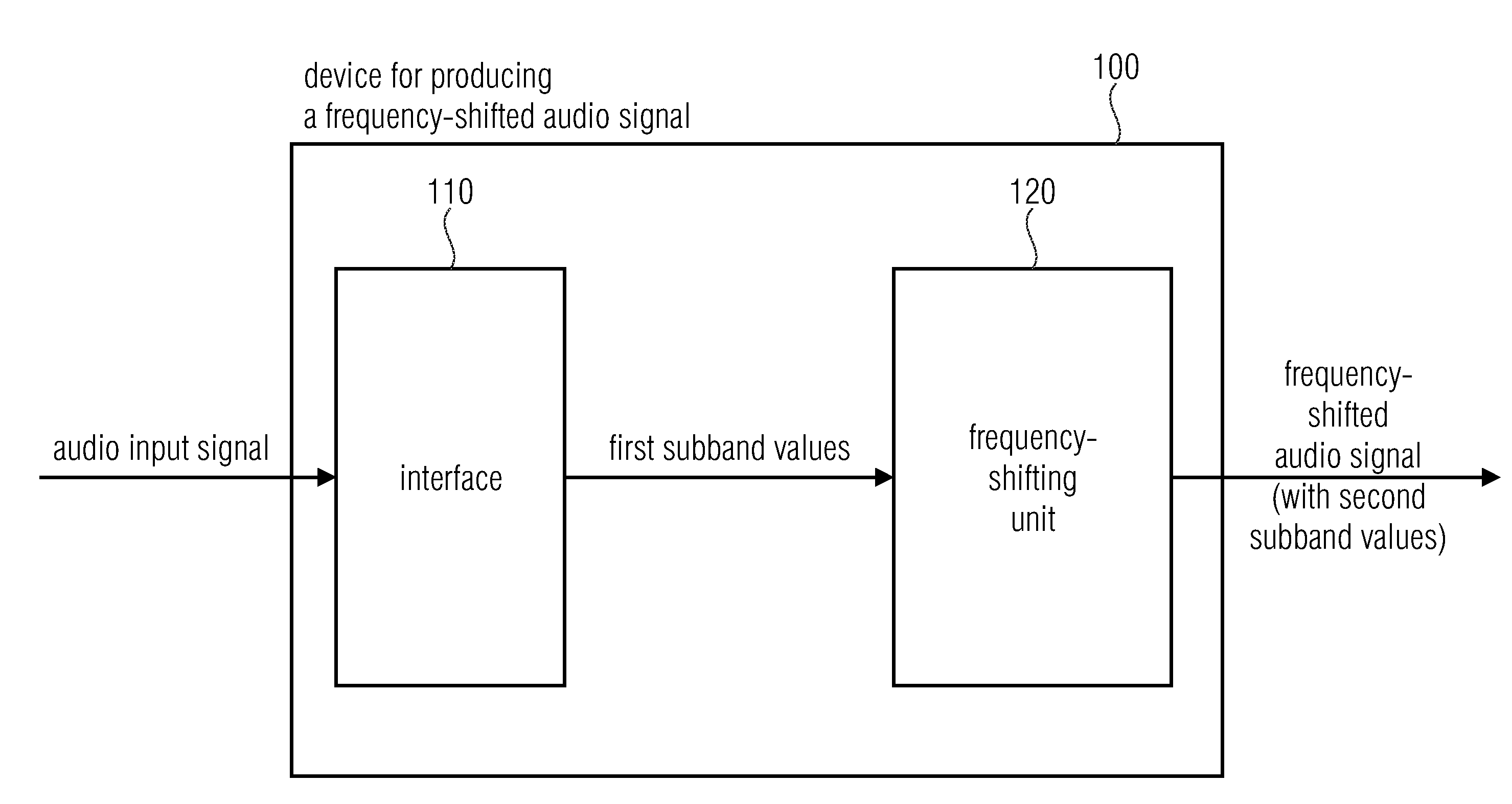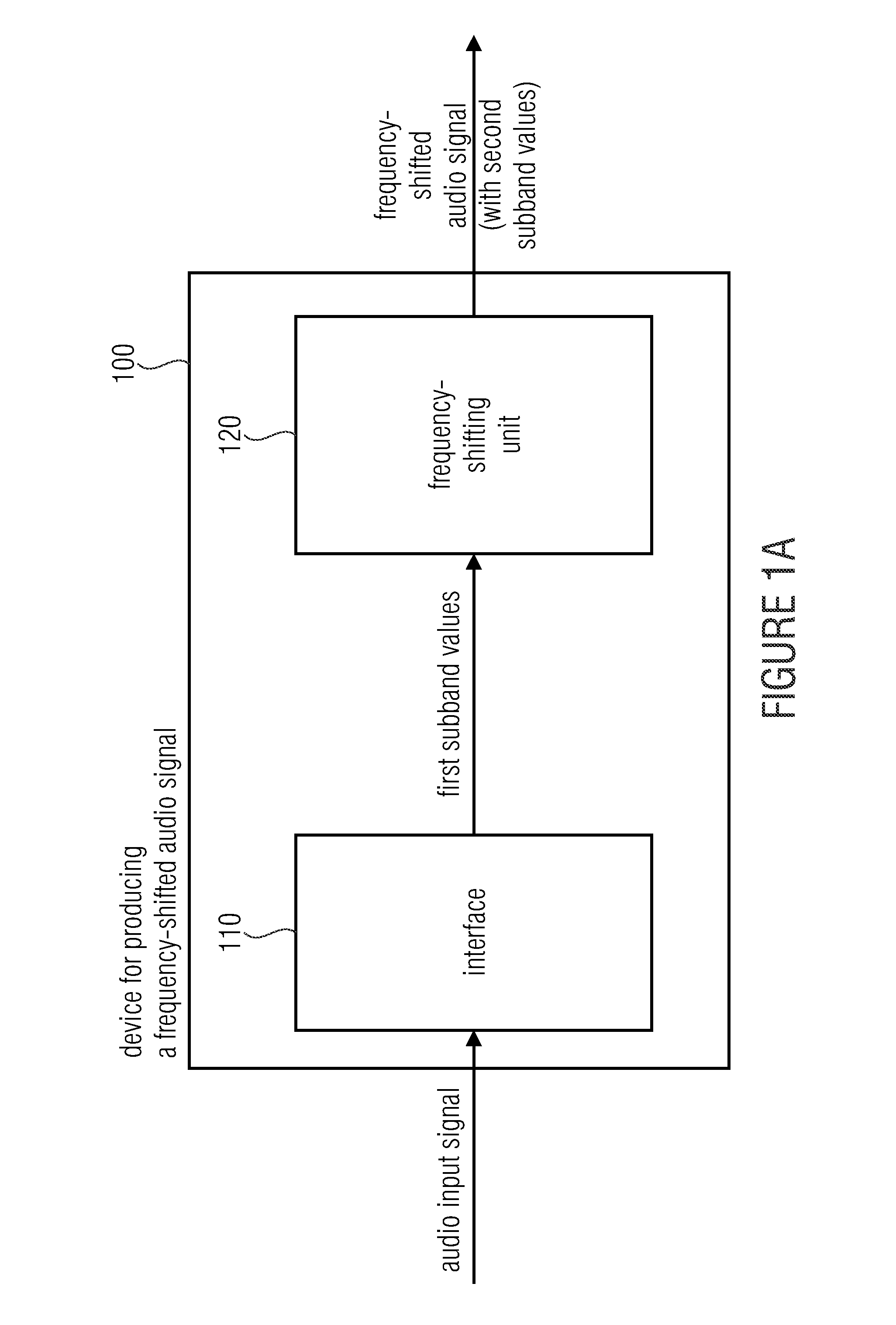Device, method and computer program for freely selectable frequency shifts in the subband domain
a subband domain and frequency shift technology, applied in the field of audio signal processing, can solve the problems of weak bandwidth limitation, near lossless reproduction of media contents, and problems in digital computers when using fourier transforms, and achieve the effect of efficient spectrum replication
- Summary
- Abstract
- Description
- Claims
- Application Information
AI Technical Summary
Benefits of technology
Problems solved by technology
Method used
Image
Examples
Embodiment Construction
[0175]FIG. 1a shows a device 100 for producing a frequency-shifted audio signal based on an audio input signal. The audio input signal, for a plurality of first subbands, here may be represented by one or several first subband values. The device includes an interface 110 and a frequency-shifting unit 120. The interface 110 is configured for receiving the audio input signal. The frequency-shifting unit 120 is configured for producing the frequency-shifted audio signal, the frequency-shifted audio signal, for a plurality of second subbands, comprising one or several second subband values each. In addition, each of the first and second subband values comprises information on a respective phase angle. The frequency-shifting unit 120 is additionally configured to produce one of the second subband values based on one of the first subband values such that the second phase angle of this second subband value may differ from the first phase angle of this first subband value by a phase angle d...
PUM
 Login to View More
Login to View More Abstract
Description
Claims
Application Information
 Login to View More
Login to View More - R&D
- Intellectual Property
- Life Sciences
- Materials
- Tech Scout
- Unparalleled Data Quality
- Higher Quality Content
- 60% Fewer Hallucinations
Browse by: Latest US Patents, China's latest patents, Technical Efficacy Thesaurus, Application Domain, Technology Topic, Popular Technical Reports.
© 2025 PatSnap. All rights reserved.Legal|Privacy policy|Modern Slavery Act Transparency Statement|Sitemap|About US| Contact US: help@patsnap.com



